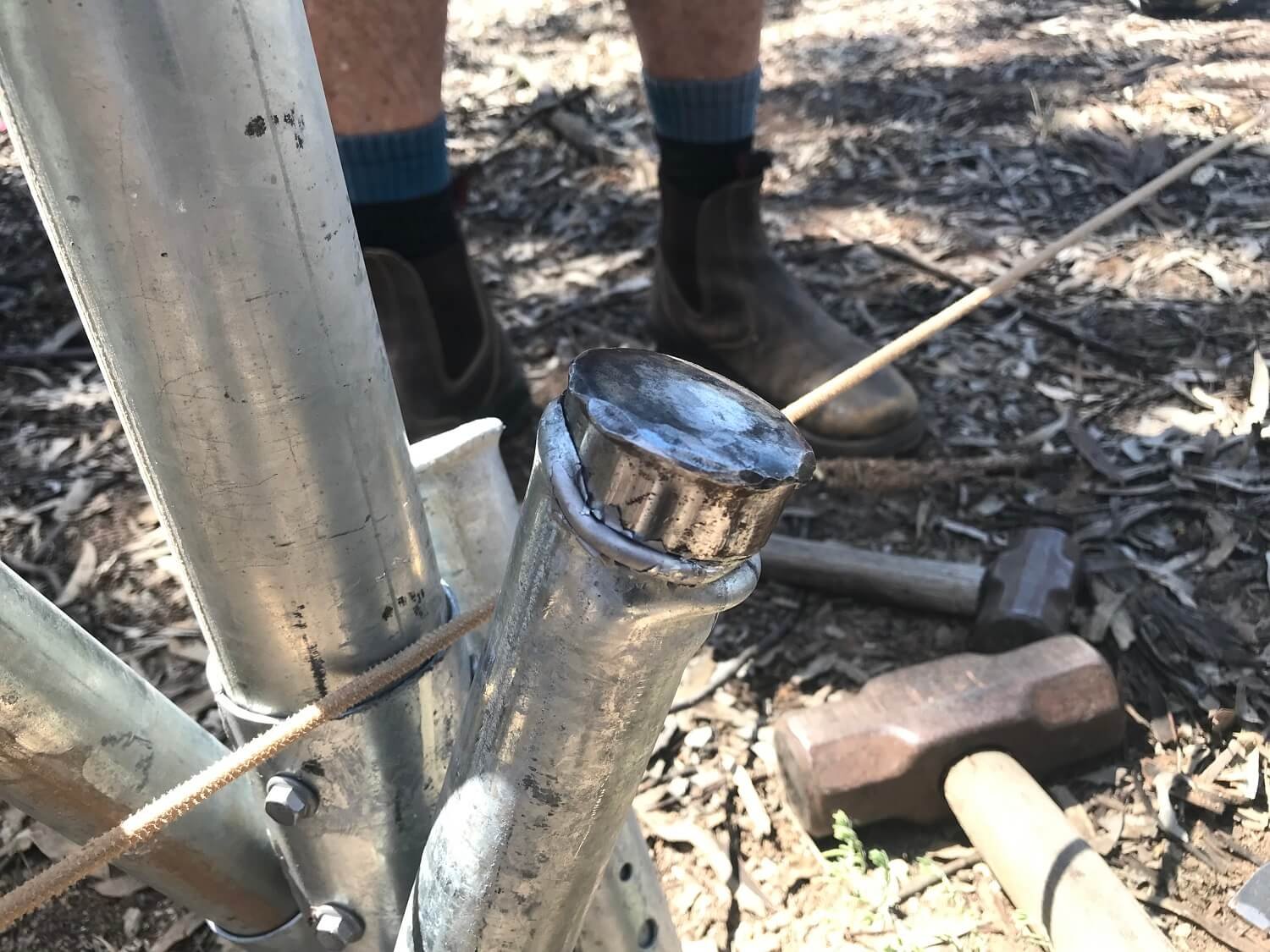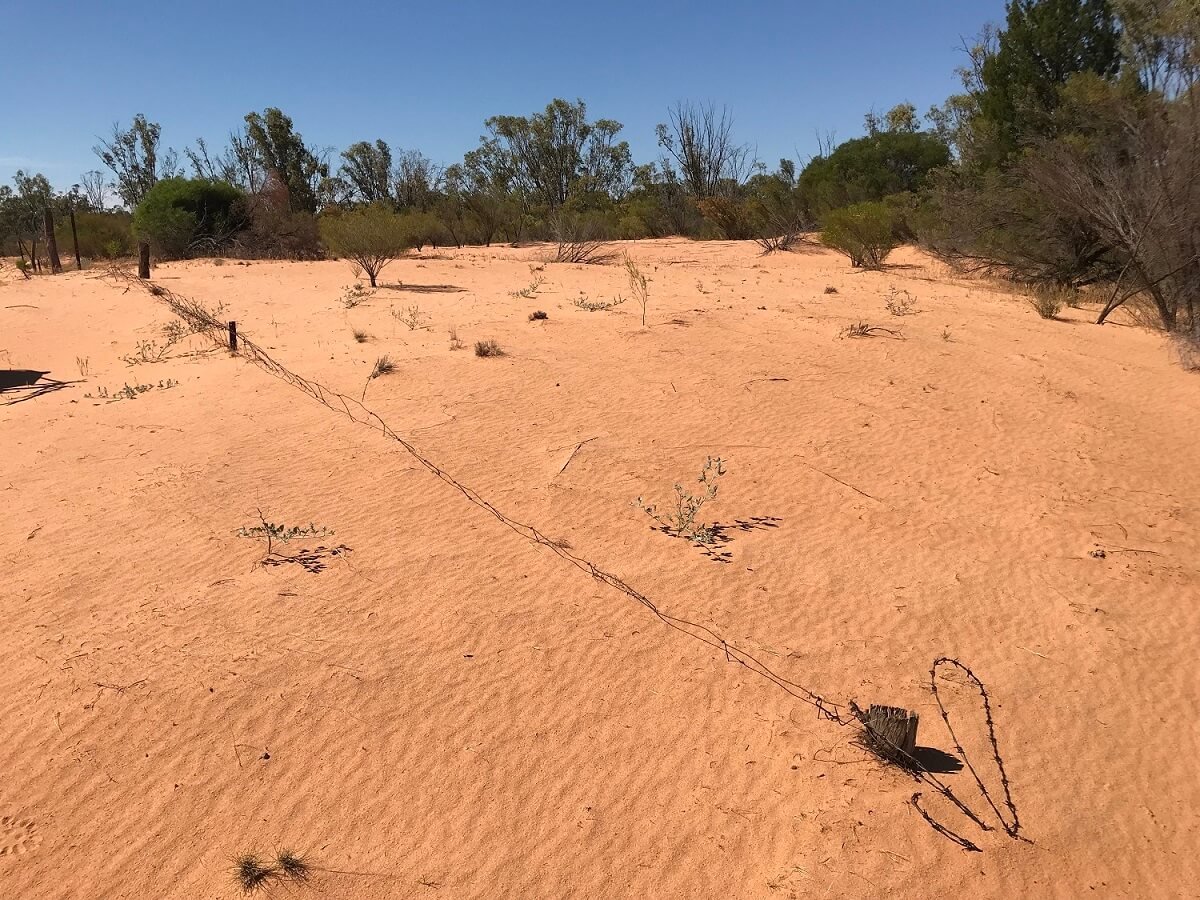Fencing the Dunes
You might be wondering, “What is taking them sooooo long to finish this fence?” Don’t worry, I feel the same. The fencing contractors finished at the end of October, leaving us with just over 2 km of fencing to complete on our own. First, Phil had to build this awesome fencing trailer. Two wire-spinning jennies, a rack for the black Westonfence insulated posts, clips, strainers and a shovel holder. It’s got the works.
Then we had to decide on the alignment of the new fence. We’ve tried a few ways to ensure the fenceline is straight, but in the end, dragging a bit of wire or rope tied to my belt seems to work best. Even straight up the sand dunes.
And, we are fencing on the edge of the dunes country, where the red sand spills down onto the grey clay. In sand, the mega anchors for the strainer posts slide in, and on the clay …. they don’t. Luckily, Phil once worked in the circus and is pretty handy with the sledgehammer. But he does occasionally drive the dolly right into the post and we have to use the angle grinder to cut it out (the dolly is the silver bit that is supposed to stop you from damaging the post when you drive it in). Why are fencing tools called Jenny and Dolly???
We are fencing amongst some big trees and we’ve aligned the fence so we don’t need to remove any of them. “Just put another bend in here!” I call out. So now we’ve got 19 strainer and stay assemblies in a section of fence that’s 2 km long. That’s slightly over-engineered, but worth it to save the trees.
We’ve also got some challenges. Sections of the old fenceline are almost entirely buried. We’ve got some plans to make sure that our new fence doesn’t get covered by sand drift also, but more on that another day. In one spot, Phil had to build a … well … I’m generously calling it a retaining wall. Talk about bush carpentry.
But we are getting there now. The trailer is working (the dog is not). We’ve figured out how to roll out the wire and get the right tension. We have to remember to thread the wire through the black insulator posts, and not cross the wires over. Final step is to use the orange wire spreader to space the insulators along the fenceline, and then clip them to the star posts. Easy.
But there’s still a few more mornings fencing in this beautiful place. (Just look at those native Pine trees popping up … so exciting!)
Our fencing project is supported by the Victorian Government through the Community Volunteer Action Grants, the Australian Government through the Murray-Darling Healthy Rivers Program, a Gallagher - Landcare Australia grant, and with help from Bio R and the Jesse Chaplin-Burch Trust and People and Parks Foundation. More here: https://www.malleeconservation.com.au/conservation-fencing
















